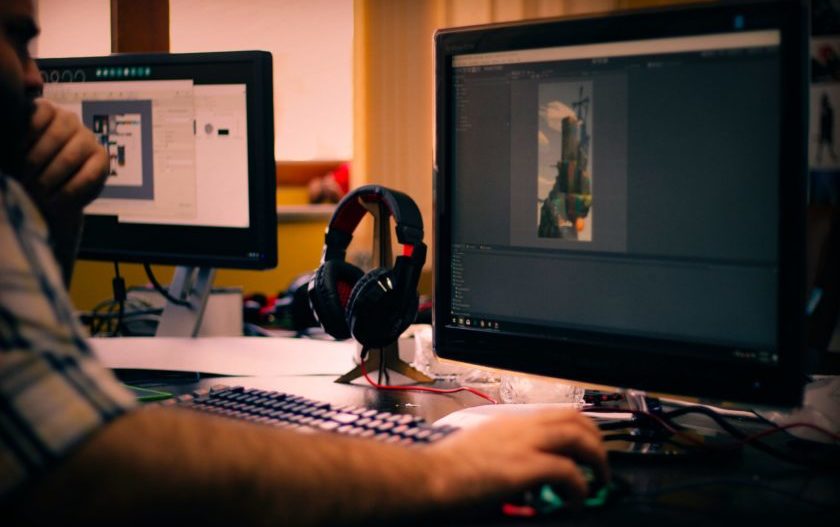HITS

M&E Journal: Distributed Production Under Lockdown … and Beyond
Story Highlights
By Chuck Parker, CEO, Sohonet –
We’re all using remote technologies to remain connected during this unprecedented time. While this shift has intensified in recent weeks, it is not a new phenomenon within M&E, and we can assume that when the world returns to relative normality, the requirement for teams to work “together apart” will remain fundamental.
In fact, we believe that the forced experiment that the whole creative sector is taking part in will lead to a revelation about how remote distributed workflows are perceived with long-lasting impact on business culture and economics.When social distancing measures were mandated, our advice to customers and industry colleagues was simple: focus on connectivity (cloud or remote workflows), security, controlling the creative workstation, and sharing your work with your colleagues or customers.
These basic steps haven’t changed, except that it’s clear to us that in the scramble to get up and running many decisions taken in the first instance are likely to now impact the overall effectiveness of your workflow.
Security imperative
Chief among these is security. Prior to current events, it would have taken an act of Congress to get approval to bring your pre-release content home. Unless you had the clout of someone like Michael Bay, you would never have asked to bring the actual content (the workstation it-self, the hard drives) to your house.
While there’s definitely a cohort of creatives working purely through cloud resources, we think the majority of productions are seeking continuity from freelancers and staff who took workstations home.
While no one is consciously putting their customer’s IP at risk, the number one mistake we are seeing people make, regardless of craft, is inadvertently connecting their workstation directly to the internet.
It’s a lot to take in when you feel like you are finally getting comfortable with your (temporary) “new normal,” but ensuring an “air gap” between your workstation and the internet may be the most important thing you do to protect work and to ensure that when we all return to business as usual, the option to work remotely becomes an ordinary and easy-to-deploy choice.
Sharing with confidence
The next issue is sharing. When thinking through this problem, you need to think about the video problem (frame rate, color fidelity) and the people problem (how many remote viewers, is the sharing synchronous in real-time or can everyone comment on their own timeline asynchronously). You also need to think about how to share the deliverable.
Synchronizing your tools works in the office and is easy when you have tons of bandwidth for send and receive, but most home solutions are going to have an asymmetrical speed where the upload is significantly smaller than the download speed.
In this scenario, sending the deliverable is a better approach than synchronizing every-thing, supplemented perhaps with a sync at the end of the workday, which can work through the night if needed.
A remote collaboration tool like Clear-View Flex can be used to invite colleagues to a secure live stream. You can do a live edit session or review and approval in real-time with over the shoulder instruction like “back up two frames,” “cut this,” “tweak that,” as near as you would in a suite.
 Obstacles
Obstacles
Color grading is a different story. It’s not unusual for colorists to take home their project on Baselight or Resolve, but the catch now is that “critical review” quality output is not yet possible from any cloud tools (though many industry players are working hard to solve this). Restrictive home bandwidth will make SDR color grade reviews tricky, let alone HDR passes. It is not possible to finalize work in a projection theater or on professional-grade reference monitors.
Your studio can’t send someone to calibrate your home monitor and we can’t send you complicated pieces of kit and expect you to install it on your own. Any solution in this unique situation has to be really simple, supported by phone, so we can get people working as best as possible, as quickly as possible.
Going forward
Society will overcome the current situation and gradually return to work. This will likely be in a phased pattern, dependent on many issues, but key creative talent such as colorists are likely to be prioritized by film and TV productions desperate to finalize shows. There will be positive consequences resulting from production lockdown. Chief among these will be an enlightened attitude in Hollywood and beyond to the practicality and benefits of a distributed content-production workforce.
Production in any industry will be impacted to such a degree it is worth delineating this as “before COVID” and “after COVID.”
The economics of the whole industry will be hard hit, so studios will be looking for even more cost-efficient means of production going forward.
When approximately 30 percent of a film’s budget is associated with travel, then remote working will now be central to the producer’s equation. In a time when the industry globally is increasingly conscious of its carbon footprint, and with individuals naturally wary of taking any kind of flight in the immediate after-math, we again see remote work as core to production.
Where before-COVID remote collaboration was seen as a necessity for an over-booked director or the prerogative of a key creative to have review and approval dialed into their location, after-COVID will see it become the norm for any member of production — from director and VFX super-visor to editor — to do more of their work together from where they live, reducing costs and improving speed and agility.
We’ve done the hard yards. Everyone is innovating and solving the problems now. Nothing will be this hard again.
We will move from before-COVID — in which 10 percent of the industry had tried remote working — to one where 85 percent did so overnight.
And guess what? It’s proven, battle-hardened in trial and error. Going back to a nor-mal remote work environment with access to high bandwidth, professional-grade tools and visiting tech support will seem like a breeze.
Virtual remote work is no longer a “love to try it someday” scenario. It’s real, it’s being tested all day, every day, and we have real-world experience with it now. Not just creatives, but executives too. Working remotely is no longer an academic discussion.
Now, it is simply the way work gets done.
———————-
Click here to translate this article
Click here to download the complete .PDF version of this article
Click here to download the entire Spring/Summer 2020 M&E Journal









